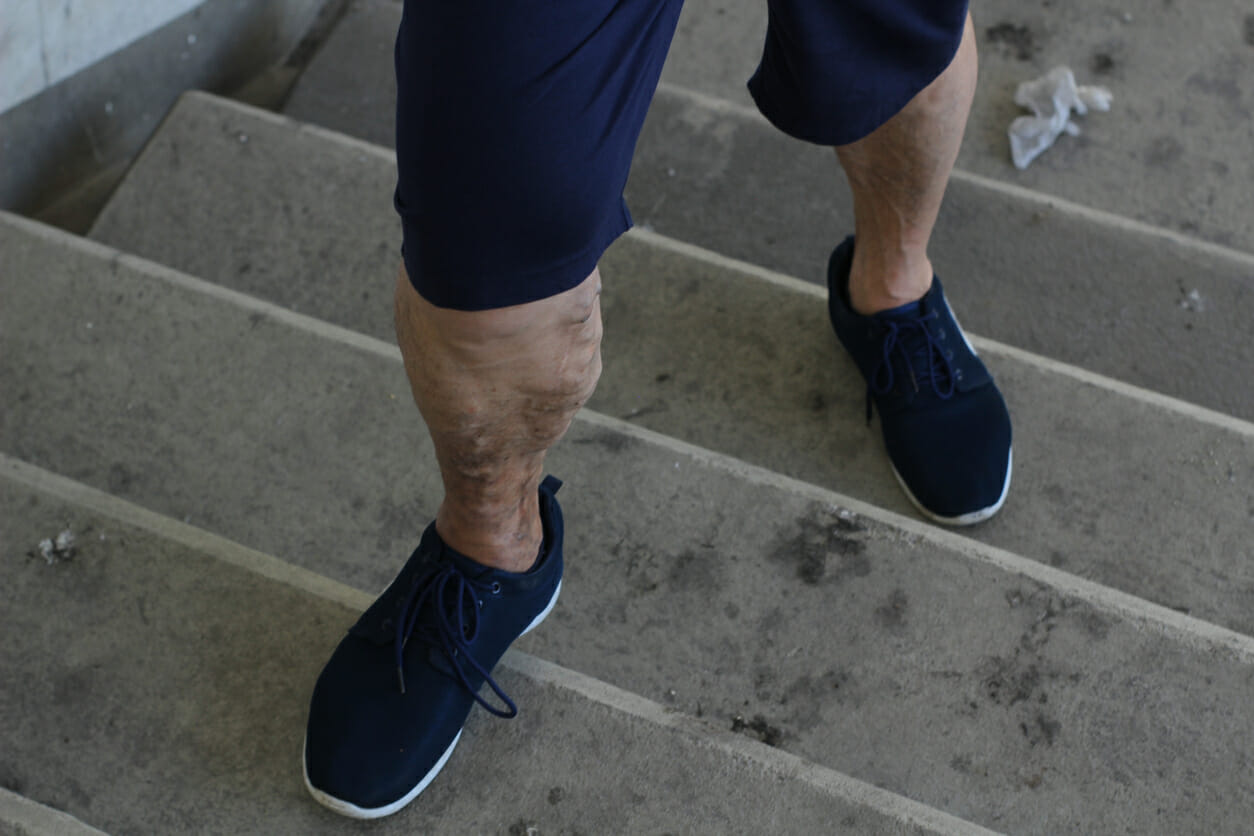Are Your Varicose Veins a Symptom of a Larger Problem?

If you have varicose veins, they might be a symptom of a more serious health condition like vascular disease. Here’s what you need to know.
Varicose veins are twisted, bulging, blue or purplish veins that press up against the surface of the skin in the hands, legs, and feet. Varicose veins are the result of poor circulation in the extremities caused by weak or damaged veins that cannot effectively circulate blood throughout the body.
When veins are not strong enough to push blood up and out, the blood falls back down and pools in the damaged vein, which causes it to stretch and swell. These painful, unsightly veins can cause soreness, throbbing, itching, and a heavy or achy feeling in the affected limbs.
Symptoms like these are bad enough, but could varicose veins be a symptom of a larger problem? Unfortunately, yes. Varicose veins are strongly associated with vascular disease. Here’s what that means for people with varicose veins.
What is Vascular Disease?
Vascular disease is an umbrella term that refers to any health condition that negatively affects your blood vessels. Your vascular system is an expansive network full of many different kinds of vessels — from arteries to veins to capillaries — that are responsible for distributing blood throughout your body. Common conditions include, but aren’t limited to, chronic venous insufficiency, deep vein thrombosis, aneurysms, and pulmonary embolisms.
Everyone is at risk for vascular disease to the extent that everyone has a vascular system that can become compromised, but some people are more at risk than others. People who are obese, have high blood pressure, high cholesterol, or diabetes, or a family history of heart attack or stroke are more likely to develop vascular disease. Also, men are at higher risk than women.
Varicose veins are symptomatic of vascular disease because the painful, twisty veins are the first clue that blood is not being circulated properly. When left untreated, blocked veins can throw blood clots throughout the body and cause a heart attack or stroke. Damaged renal arteries can cause kidney failure. Poor circulation in the calves due to damaged femoral arteries can cause chronic pain in the legs and in the worst cases, lead to amputation.
Can Vascular Disease Be Treated?
With potentially life threatening health conditions like this at stake, it’s critically important to get vascular disease diagnosed by a doctor. Consider varicose veins a warning flare — the presence of varicose veins doesn’t mean that you have vascular disease, but it does mean that you need to be on high alert.
Fortunately, there are numerous treatment options available for treating varicose veins and ensuring they don’t escalate to full-blown vascular disease. Sclerotherapy, phlebectomy, and laser vein treatment are excellent for treating varicose veins because they’re quick, minimally invasive, and permanently close off weakened veins so healthy ones can take over. Most patients resume normal activity the same day, and fully recover within two weeks.
Get Help from the Experts
Over 40 million adults in the United States suffer from varicose veins, but you don’t have to be one of them. Contact the vein specialists at the Desert Vein Institute today. Our licensed professionals will walk you through your treatment options and help you say goodbye to varicose veins for good.




